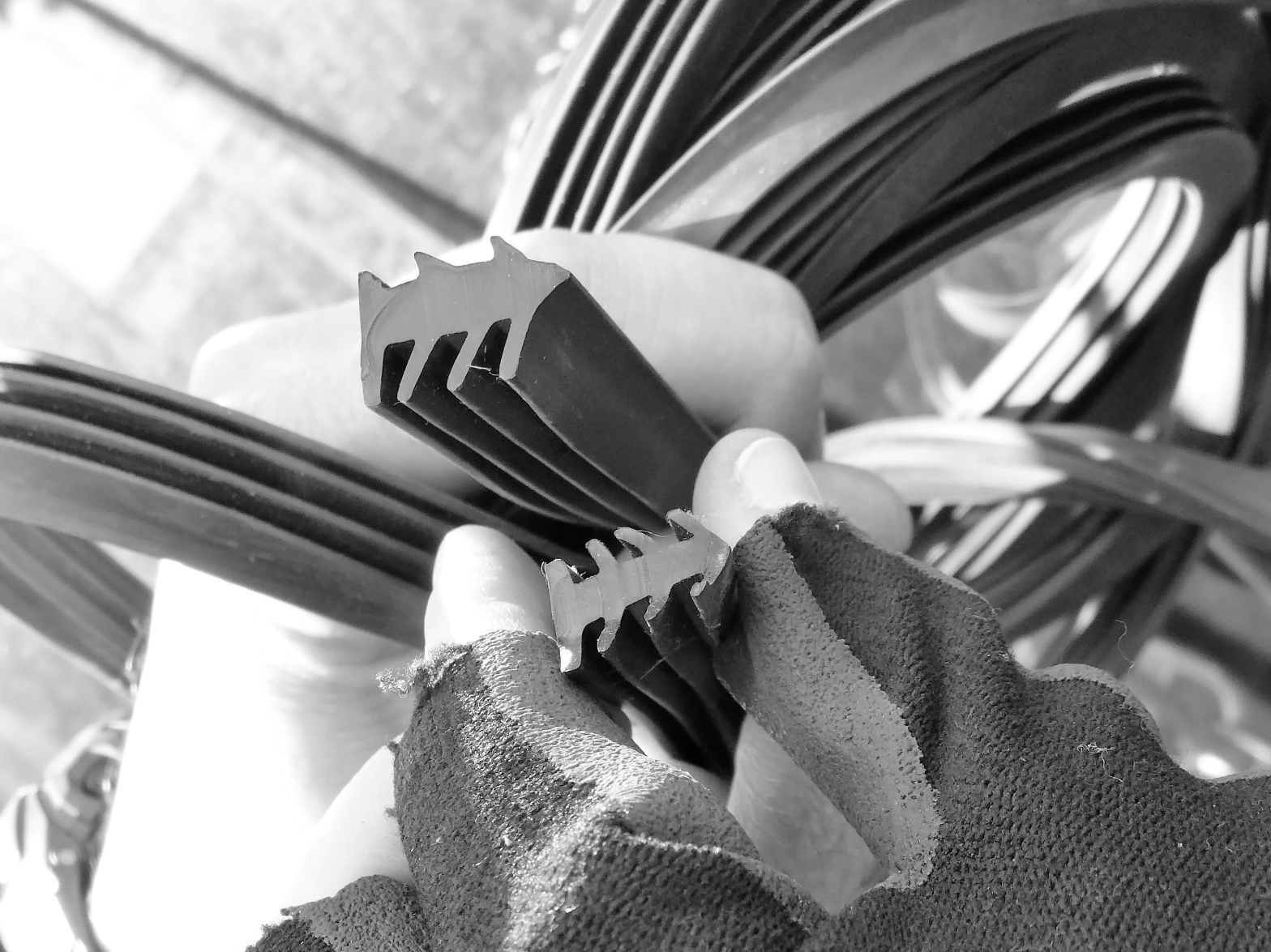The On The Face Of It blog series has been written to give property professionals an overview of the curtain wall façade, differences in system types and defects which are commonly observed during inspections.
Blog #4 in this series will look at gaskets – a vital but often neglected component.
What are gaskets and why are they important?
Gaskets are the rubber seals that are installed to the perimeter of the glass panels on a façade system. Gaskets are present on the inner and outer face of the façade but for the purposes of this blog, we’ll be focusing on the exterior gaskets.
The main functions of gaskets are to prevent rainwater ingress and to support and cushion the glass in the frame.
Most façade systems will be able to accommodate some water ingress and water can be drained away but it is important to keep in mind that the drainage capacity of these systems is limited. Take away the protection provided by the gaskets, and drainage can become overwhelmed. In addition, shrunk and missing gaskets will result in a lack of support to the glazing unit and the potential for blow-out is increased.
Not all gaskets are created equal
Like everything in construction, there is a whole different range of products available with varying characteristics and price tags. Gaskets are no different and it’s fair to say you get what you pay for.
All gaskets will shrink over time and factors that increase the rate of shrinkage are the material grade and the corner detailing.

The image above shows how different gaskets of similar ages can look after 30 years. All of these examples are in Auckland, so they have been subject to comparable environmental exposure. The top left and right hand gaskets need to be replaced as a priority and the right hand example should probably have been replaced 10 years ago. Both examples have corners that have been cut to fit and this means there is no resistance to the inevitable shrinkage at the extremities of the gasket lengths.
The example on the bottom left is different though. Still showing signs of age but, not to the same extent and still able to protect the perimeter from water ingress.
So, what makes the bottom left hand example different?… welded corners help resist the pull of normal shrinkage and high specification materials mean the gasket is more durable and will shrink less than a lower grade option.
Gasket replacement

Timing for replacing gaskets will depend on their condition. A low spec gasket will have a shorter serviceable life (10-15 years) and high spec gaskets could give you up to 30 years.
Regardless of the gasket specification, you will need to replace them at some point. Generally speaking, when gaps start appearing at the corners, it is time to replace your gaskets. Targeted replacement of gaskets may be an option in the short-term but full replacement will be required eventually.
Replacement of full gasket lengths is the only repair method I would recommend. I often see little pieces of gasket slotted into the gap and all this does is create some extra edges to shrink back. I have observed 10mm shrinkage of gaskets after just 2 weeks of installation so, if you think filling gaps with small pieces of gasket is a good repair, think again.
The dreaded sealant repair
Gasket should be replaced with gasket – not sealant. When you pump sealant into the gap, like the examples below, you are not fixing the problem… but you are creating new problems.
The above examples are typical of the standard of sealant application when used as a gasket repair. The problem with the use of sealant in these circumstances is it can be very easy to inadvertently block drainage channels with the sealant and the shrunk gasket will keep shrinking and gaps will appear again. If that isn’t bad enough, it looks like a hot mess and will not cushion the glass as gasket would.
Taking care of your façade
The best way to tackle any aspect of façade maintenance is to plan for it. Make sure you have a forward maintenance plan which captures all components that will need repairs or renewal and the associated budget costs. If you can track down the facade shop drawings, it will make the process a lot easier – see On the Face Of It: #6 Curtain Wall Condition Assessment: Desktop Study
 Once you know what is required, you can procure the works and select a contractor with the appropriate skills and experience to undertake the work properly. Keep in mind that a willingness to ‘repair’, does not necessarily equate to ability. Being able to abseil, does not qualify somebody to repair a façade… the sealant splatters pictured above are proof of that.
Once you know what is required, you can procure the works and select a contractor with the appropriate skills and experience to undertake the work properly. Keep in mind that a willingness to ‘repair’, does not necessarily equate to ability. Being able to abseil, does not qualify somebody to repair a façade… the sealant splatters pictured above are proof of that.
By Victoria Richardson




